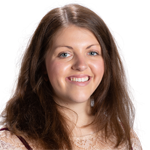Studying for a masters degree in science communication is a very different experience to studying for my undergraduate degree in maths and physics. Perhaps the greatest difference is in the amount of reading I now do. In addition to the weekly readings set for each module, which are mainly academic articles, you are strongly encouraged to immerse yourself in literature of every kind. This can range from popular science books to biographies, journal articles to science journalism, books about feminism to books about philosophy. Lots of books you’ll need for the course are available in the campus libraries and most journal articles can be readily accessed online through the library search. Sometimes, however, you just want to increase you own personal library, and Christmas was the perfect opportunity to asks relatives for a few books I’ve been inspired to read since starting at Imperial.
Here is a brief look at three books I received for Christmas which you may too be inspired to read.
The Immortal Life of Henrietta Lacks, Rebecca Skloot.
In 1951, an African-American women called Henrietta Lacks had cells taken from her cervical tumour without her consent. The cells from her tumour, HeLa cells, became the first human cells to survive outside of the human body and continue to multiply for a long period of time. Sadly, Henrietta passed away later that year, however her cells are still alive to this day. HeLa cells have enabled medical breakthroughs in almost every field of science, most prominently in helping to test vaccinations for diseases such as polio.
However this book does not focus on the scientific advancements HeLa cells have brought, but instead explores the woman from whom these cells originated. Through her meetings with the Lacks family spanning almost a decade, Rebecca Skloot, a science writer from Chicago, uncovers the real story of Henrietta and her family. This brings to the forefront issues of race, gender and class with regards to the sharing of science, which I believe everyone should be aware of.
Hello World: How to be Human in the Age of the Machine, Hannah Fry.
Dr Hannah Fry is one of my favourite celebrity scientists. Hannah is an Associate Professor in the mathematics of cities at University College London, and engages in various science communication activities. She has given TED talks, fronted television documentaries such as Magic Numbers: Hannah Fry’s Mysterious World of Maths aired on BBC Four earlier this year and hosts a science podcast, The Curious Cases of Rutherford & Fry, also with the BBC. Furthermore, Hannah has also written books, which have popularised maths.
Whilst I was volunteering at New Scientist Live in September this year, I heard the talk Hannah was giving based on her new book Hello World. She explored the topical idea of algorithms, and asked us to question how much we should trust them through a series of scenarios. For example; you are accused of a crime, would you rather be judged by a human or a machine. Her book explores algorithms in the justice system, as well as in cars, medicine and even art. Hello World, provides both a mathematical understanding and sheds an ethical light on the technology that could completely change how we live.
Inferior, Angela Saini.
After a term of studying science communication, it is clear that one aim of this sector is to address the gender imbalance prevalent in science; whether that be in terms of career progression, portrayals in the media or general treatment in the workplace. There are many wonderful people already fighting to address this for example Dr Jessica Wade, a post-doctoral researcher at Imperial College’s Blackett laboratory. Jessica gained recognition in July this year, for creating over 270 Wikipedia entries for women in science who had previously not got the recognition they deserved.
Jessica cites Angela Saini’s 2017 book Inferior as one of her main influences. With the subheading ‘The true power of women and the science that shows it’, Inferior addresses the gender stereotypes that have long-existed in society by challenging scientific claims about sex differences. The result is a view of science where women are included, not excluded; a powerful message communicated incredibly well.



